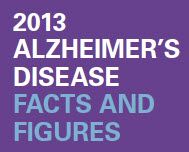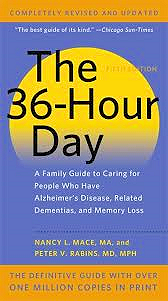Driving a vehicle is a complex activity that requires several abilities and skills, such as:
- Quick reactions
- The ability to divide your attention (e.g., watching a traffic light and pedestrians, while keeping your foot on the brake)
- Good judgment
- An understanding and ability to recall the rules of the road
- The ability to find a destination
- Adequate eyesight and hearing.
Driving also represents freedom, independence and mobility. Although driving is a privilege, some people view it as a right. Alzheimer’s disease and other dementias cause changes that affect a person’s ability to drive a motor vehicle safely. A diagnosis of dementia, however, does not automatically mean that a person is incapable of driving. Some people may be capable of driving safely for some time after the diagnosis, depending on when in the disease progression the person has been diagnosed and the rate the disease progresses. Eventually, however, people with Alzheimer’s disease must stop driving, as it will no longer be safe.
A) While the person with Alzheimer’s disease is still driving
For people who have been driving for many years, driving may feel mostly automatic. But driving is a complex task that requires quick reactions, thought processes and dexterity. If you think the person with Alzheimer’s disease may be having difficulty driving, watch for these signs:
- Traffic violations
- Accidents
- Getting lost
- Misjudging distances
- Forgetting the rules of the road
- Slow response times
- Taking too long to reach a destination.
What you can do:
- Plan ahead
- Arrange for a driving assessment
- Monitor driving habits
- Increase safety
Plan ahead
Plan ahead for the time when driving must stop. Talk with the person with Alzheimer’s disease to find out when driving is needed most and why. For example, is it for keeping medical appointments, shopping, entertainment, meeting with friends? Or is it perhaps more a form of escape or relaxation? Once you’ve found out the person’s driving needs, talk about other ways of getting around. These can include:
- Public transit
- Rides provided by community organizations
- Lifts from family members and friends.
Arrange for a driving assessment
Look into special testing to assess the driving abilities of a person with dementia. This could be a driving simulation test and/or a road test, carried out by someone with experience in testing drivers with cognitive problems. If this type of driving assessment is not available, ask a doctor to determine if and when the person is no longer able to drive. The doctor may ask the person and family members questions about:
- Driving patterns (when and where the person drives)
- Any differences noticed in driving skills
- Any unsafe or abnormal driving behaviour
- Traffic tickets (for going too slowly, too quickly, improper turns, failing to stop)
- Crashes, fender benders or near-misses
- Instances where the driver has been lost
- How comfortable the person or family members feel about the person’s driving abilities.
Monitor driving habits
Throughout the disease, the person with dementia, family members and a doctor or other health care professional should monitor the person’s driving ability. When appropriate, the person should stop driving. If you are the person with Alzheimer’s disease, here are some things to consider:
- Ask someone you know if he or she has noticed changes in your driving.
- Arrange for driver testing.
- Ask family members and friends to drive you where you need to go, or use public transit and take taxis.
Increase safety
Here are some tips to minimize the risks while the person with Alzheimer’s disease is still driving:
- Take short drives and keep to familiar roads.
- Drive at quiet times of the day.
- Be aware of the timing of medications that might affect the ability to think clearly or to see.
B) When to stop driving: Broaching the subject
Sometimes the person with Alzheimer’s disease is relieved to stop driving. Perhaps she was feeling a lack of confidence when she drove. She might have been worried about an accident or confused about how to get places. Even someone with this awareness, though, will need support and sensitivity around the subject of giving up driving, as it still can represent a loss of independence. Family members and caregivers: When a person is unable to recognize or admit that he is losing his ability to drive, family members and caregivers often have to deal with the issue. Their concerns may include the risk to the person, the risk to the public and the risk of liability in the event of an accident. Within families, there may be disagreement about when the person with Alzheimer’s disease should stop driving. Some family members may believe that the person should stop driving immediately upon diagnosis. Others may be inclined to overlook some risky driving behaviour in favour of maintaining the person’s sense of independence. They may fear that bringing attention to the person’s loss of abilities and the need to stop driving may create difficulties in the relationship. By the time the person should give up driving, the disease may have affected his ability to understand the reason why. Discussing the situation openly in a trusting environment may help the person accept the loss more easily.
Pages: 1 2








Leave a Reply